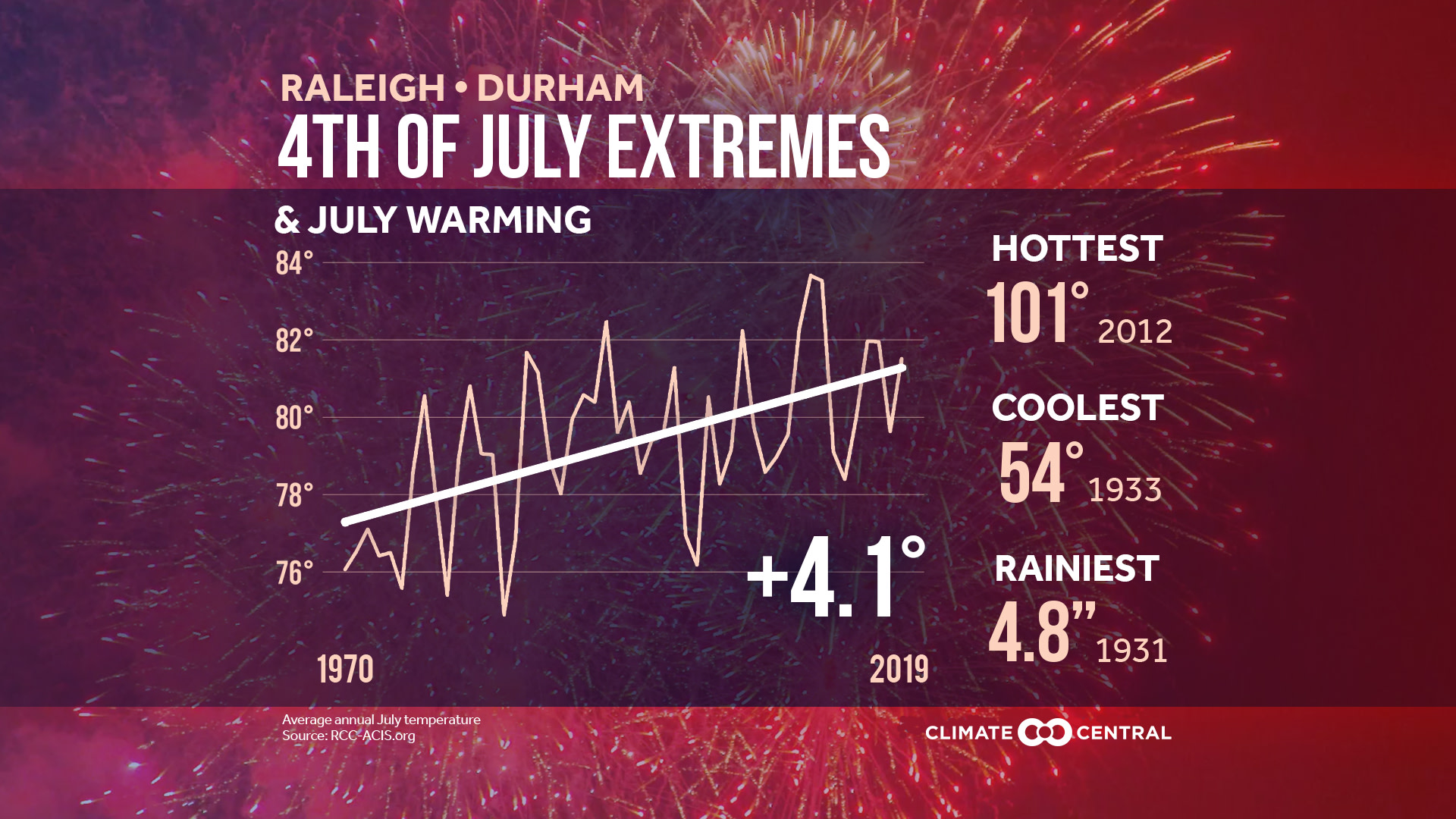KEY CONCEPTS
If there’s one thing that won’t change about this year’s July 4th celebrations, it’s the heat. Over the past year, there were 49 all-time record highs (according to NCEI) across the U.S., compared with just 2 record lows. This week we zoom in to look at just the records set on July 4th—showing which Independence Days were the hottest, the coolest and wettest in your area.
July is also getting warmer across the U.S. Of the 242 cities analyzed, 70% (170) recorded an increase of at least 1℉ in average temperatures since 1970, with 44% (106) registering an increase of 2℉ or more. The greatest increases are concentrated in the western United States.
In a warming climate, seemingly-small increases in average temperature lead to big increases in extremes. Record high temperatures have been outpacing record lows at an increasing rate across the U.S.
For the rest of the summer, temperatures are expected to be hotter than normal for much of the country, and scientists are confident that 2020 will be among the hottest years globally—even vying with 2016 for the hottest year ever recorded.
This Saturday marks the 244th anniversary of Independence Day, and the day’s typical festivities—cookouts, picnics, concerts—may look quite different this year. One July 4th hallmark that is unchanging, though, is heat.
In a warming world, seemingly-small increases in average temperatures lead to big increases in extreme heat. As a result, record high temperatures have been outpacing record lows at an increasing rate. There were 49 all-time record highs across the U.S., compared with just 2 record lows over the past 12 months. This week we zoom in to look at the records set on July 4th—showing which Independence Days were the hottest, the coolest, and wettest in your area—along with July temperature trends.
Of the 242 cities analyzed, 70% (170) recorded an increase of at least 1℉ in average July temperatures since 1970, with 44% (106) registering an increase of 2℉ or more. Western cities top the list of biggest July increases, with Reno, NV warming 11.5℉ on average since 1970, followed by Boise, ID at 7.1℉.
For the rest of the summer, temperatures are expected to be hotter than normal for much of the United States, while NOAA is “virtually certain” that 2020 will be among the hottest years on record globally, with a 50% chance that it’ll take the top spot from 2016 as the hottest year in recorded history. Changing this trajectory from ever-increasing extreme heat is more pressing than ever— to sustain a habitable climate and alleviate the outsized impacts of climate change on frontline communities.
EXPERTS TO INTERVIEW
Radley Horton, Ph.D., Lamont Associate Research Professor, Columbia University Earth Institute Research.
Interests include climate change and extreme weather, including impacts and resilience relating to extreme heat and heat with high humidity. rh142@columbia.edu
Dr. Jay Lemery, Associate Professor of Emergency Medicine, University of Colorado School of Medicine.
Research interests include: effects of climate change on human health, remote medical care. john.lemery@ucdenver.edu
METHODOLOGY
Local Independence Day climate extremes and average July temperatures from 1970-2019 were retrieved from the Applied Climate Information System for each station’s period of record. Climate Central's local analyses include 244 stations. However, for data summaries based on linear trends, only 242 stations are included due to large data gaps in St. Johnsbury, Vt. and Wheeling, W. Va
